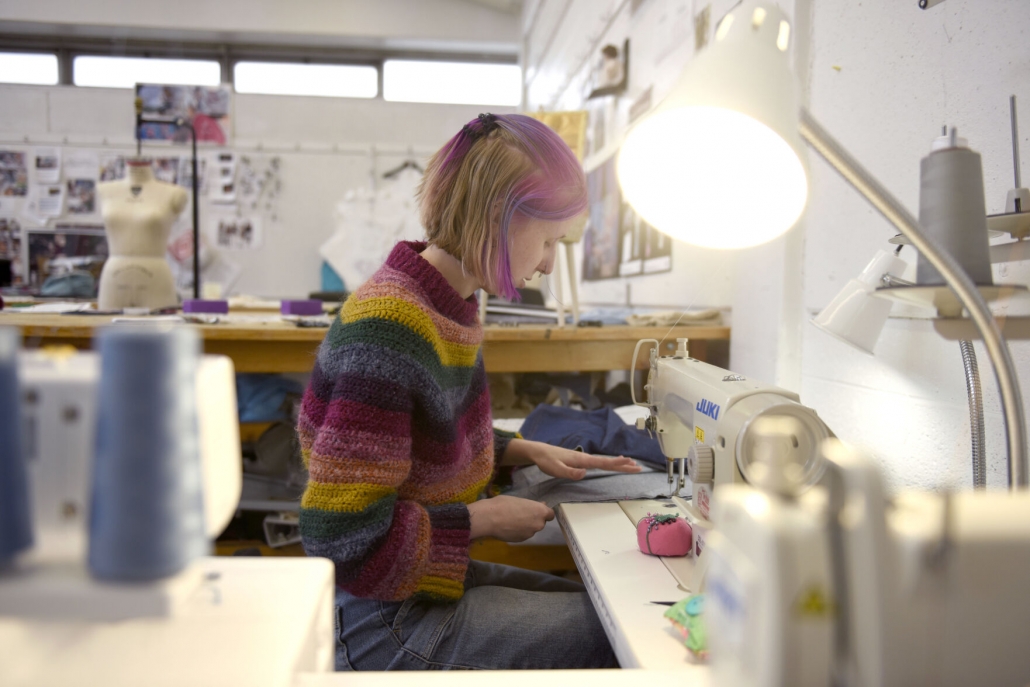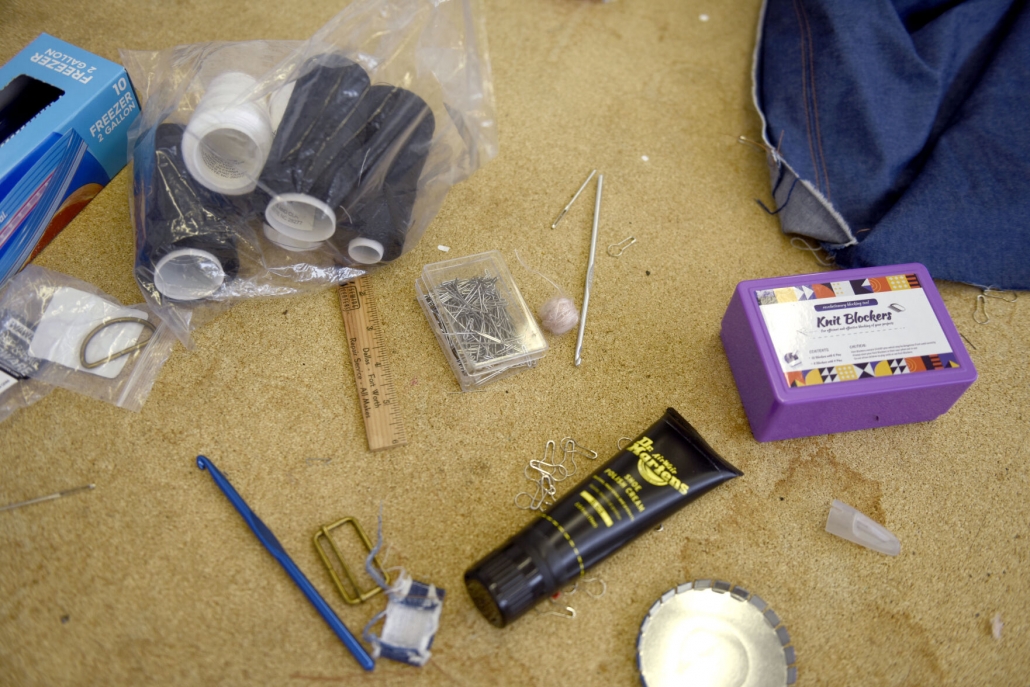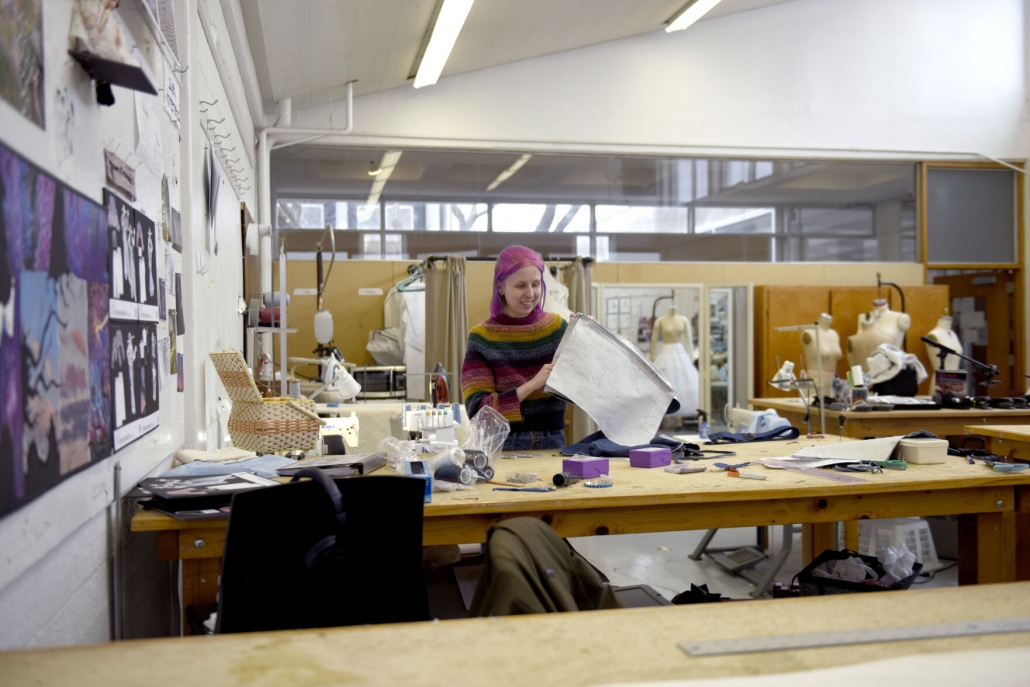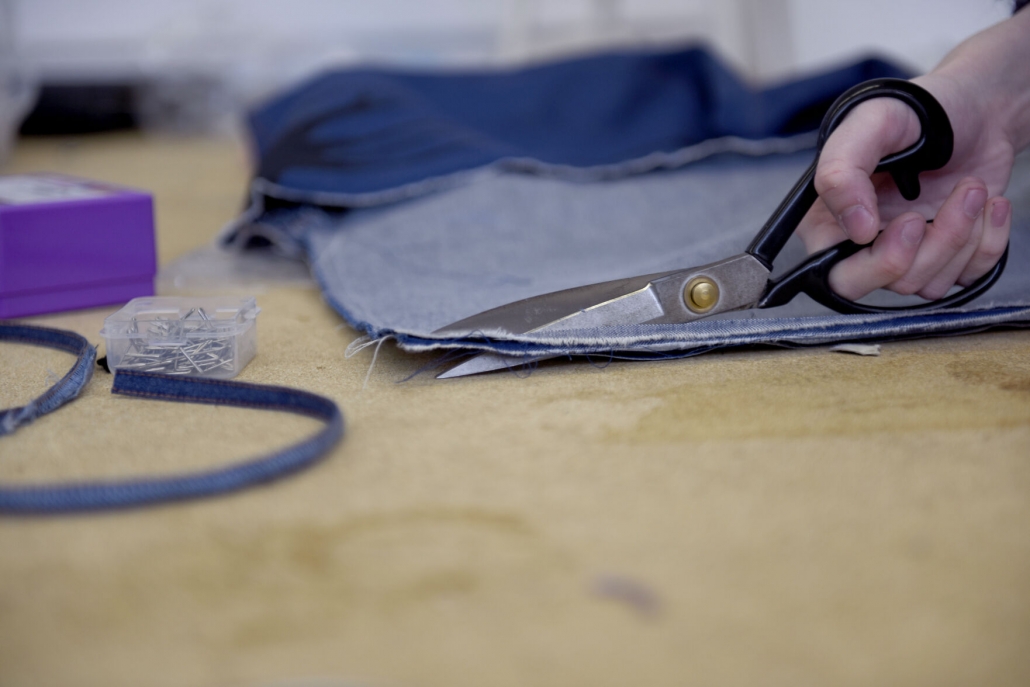How Stephens College’s fashion program sewed its name into fashion history
As the 14th-best fashion program in the world, Stephens College hosts its 80th annual student-led fashion show called The Collections on April 13.

Even though Juliet Forehand originally came to Stephens College for its writing program, she has a passion for fashion and learned how to sew at age 10.
ELISE WILKE-GRIMM
Stephens College houses the 14th best fashion program in the world. This year, it celebrate the 80th annual student-led fashion show, The Collections.
As they anxiously await the show, the women of Stephens College fashion program continue to make their mark on the Midwest at one of the best programs worldwide.
The history
Four years before the start of World War II, a fashion program at Stephens College was established. Stephens offers pivotal opportunities to fashion students right here in Columbia.
“This one is from 1942,” Kirsteen Buchanan says as she flips through Stephens College yearbooks. Buchanan, an alumna and professor in the fashion program, talks through different names the department has had over the years.
The university holds a vast collection of historically rich archival documents filled with original Stephens fashion show pamphlets, photos of students’ sample designs and film collecting dust.
According to campus legend, the program began in 1935 because administrator James Madison Wood thought the women of Stephens College dressed frumpy. A 1936 report to Wood claims that style on the campus had improved with the “grooming department,” as it was called at the time. Even though research alludes to the official start of the program in 1935, it wasn’t until 1944 that the annual fashion show began.
From dressmaking courses to a curriculum focusing on industry trends and hands-on experience, the program has held onto an emphasis in practicality and market research; this focus is what makes the Stephens fashion program prominent in its field.
The first courses focused on dressmaking and style selections, Buchanan said. As the program developed, students could pick emphasis areas to study the industry. In the late ’70s, fashion merchandising became fashion marketing and management, and fashion design integrated product development in the mid-1990s. Later on, fashion communication made its debut. As of today, the program offers avenues including technical design and engineering.
“It was always about promoting women in fashion, women in design,” Monica McMurry, current faculty chair says. “And overall, we’ve never been the avant-garde kind of school. It’s been a little practical. I think in the long run, that’s served us well.”
Prime pattern-making
“Susie Stephens is more than a name, it is a symbol of an American way of life — the college way of life — the learning about life by doing, the doing which gives life meaning and purpose, the accomplishments which are milestones toward the future,” stated a 1952 News Bureau article.
Throughout its history, Stephens has had quite the monumental relationship with Butterick pattern company. Roughly dated back to the early ‘50s, patterns created by students at Stephens were presented as some of the best. These patterns were known as “Susie Stephens” designs, which McMurry speculates was a trademark to set the program apart from other school designs involved in contests and for label identification. Between 1950 and 1952, Butterick created a Susie Stephens pattern line marketed for teenagers.
Susie Stephens is also a traditional reference that has stuck its claim, like a pin in a dress form, on Stephens campus for years. Still to this day, fashion students refer to this name for their own design work.
“My guess is it began to be a way to recreate students and have something that set a school in the Midwest apart from the schools on the coast,” McMurry says.
As she reminisces on her days as a student, McMurry notes that the program has always prioritized bringing in professionals from the industry as critics and advisors. However, this process took a slight turn when the program decided to emphasize education on market research.

Forehands supplies scatter her workplace. All her models are wearing Dr. Martens boots for the show, so she is prepared with Dr. Martens shoe polishing cream before the show.
ELISE WILKE-GRIMM
A notable program
In 2014, the school was inducted into the prestigious Council of Fashion Designers of America. The CFDA was astounded by the Stephens Costume Museum, leading to several campus visits, contests and ultimately an induction into the council. In 2015, Stephens was ranked by the publication Business of Fashion.
Stephens then became a part of the Fashion Scholarship Fund, resulting in a skyrocket of the program’s rankings. The program was named fourth best in the country and 13th best in the world, due to its high quadrant score in “long-term value and learning experiences.”
In 2023, CEOWORLD Magazine ranked Stephens College as 14th in the world based on a survey of 185,000 fashion executives, graduates, global fashion influencers, industry professionals, fashion school academics, employers and recruiters in 200 territories. Factors involved in this ranking include the program’s curriculum, faculty expertise, industry partnerships and alumnae success.
“Our long-term value and learning experiences came from — and this is what we always have done well in any kind of ranking — is students graduate in our program and they’re well-trained and they get a job,” McMurry says. “And then they get another job. And they stay in the fashion industry. That’s that long-term value.”
Students, professors and alumni emphasize that market research and the real-life application of The Collections show add significant value to the program.

“It is so satisfying to create something and it turns out exactly how I wanted it to look,” Forehand says. In 2024, the fashion program will host its 80th annual fashion show.
ELISE WILKE-GRIMM
Market research
McMurry often reminisces on her time spent as a fashion student in 1978. In fulfilling various roles, including dean of the school of design and chair of the fashion program, McMurry has seen Stephens grasp tightly to practicality amidst an ever-changing fashion industry.
During her undergraduate time, McMurry noticed that students would produce designs to show visiting critics, a practice they still continue today. Oftentimes, they would present a design based on a general idea and not consider the needs of the global market.
“But now, the way we do it is you do a lot of market research,” McMurry says. “Who’s your customer, what’s your market, what’s your price point, what kinds of stores would you be in, and they (students) do a market plan.”
The critics who attend Stephens prior to the annual fashion show provide expertise regarding the current market. Students must consider how their designs function for consumers amidst the industry’s current conditions.
“There is intense trend research that you have to do,” Juliet Forehand, a senior fashion design major, says. “The timetables (of design in the program) are longer than the real world, but they do get shorter as you go. I think that does help learning because the fashion industry moves so quickly at this point, you need to know how to get stuff out.”
While considering market research, students also find the freedom to indulge in creativity. With an emphasis on technical design, including the development of production packs, 3D design, converting flat sketches and the opportunity to demonstrate these skills at the fashion show, students can explore avenues that they may not have been able to at other programs.
Fashion show preparation
Undergraduate students have been preparing for the fashion show since September, unlike the seniors, who started developing their collections last summer. In early fall, students are in charge of coming up with a concept for the show. The concept must identify a target market that will fit in the fashion industry and lead their designs to success. The 2023 show, for example, encompassed a theme of “phygital experiences,” a combination of physical and digital aspects with a relationship between fantasy and reality.
According to McMurry, the students are taught the extensive process of how to create a design through prototyping and 3D design, while also fitting the designs to models of all different sizes.
With about 12 students per class and extensive mentorship, students have a support system that pushes them to develop skills for the real world. In theory, a class of 20 has a higher chance of being seen and actively participating, compared to a coastal program’s class of 600, according to McMurry.

“It is funny how when people are working with denim they always create new names for their pieces, like ‘jurse’ or ‘jorts’,” Forehand says. Stephens College’s fashion show is student-led, by students like Forehand.
ELISE WILKE-GRIMM
A place to return
Stephens also brings people back to their designer roots and celebrates the success of young women. After graduating from Stephens College, Buchanan pursued her fashion career as a production assistant in New York. She then ventured to design opportunities in both Chicago and Dallas.
“I wanted a different atmosphere than that,” Buchanan says. “And I visited Columbia again. I hadn’t been back in awhile, and it felt like I was coming home.”
In a pen pal letter to Forehand, a 1984 Stephens alumna, Cindy Fernando, encourages her to take in every precious moment of her experience.
“I loved Stephens because I found myself there,” Fernando writes. “I was very shy going in. Coming out, I was confident and knew what I wanted. Stephens nurtures and guides as you change from a girl to a woman.”
——————————————
By CHLOE LYKKEN : Mar 28, 2024
VOX Magazine


